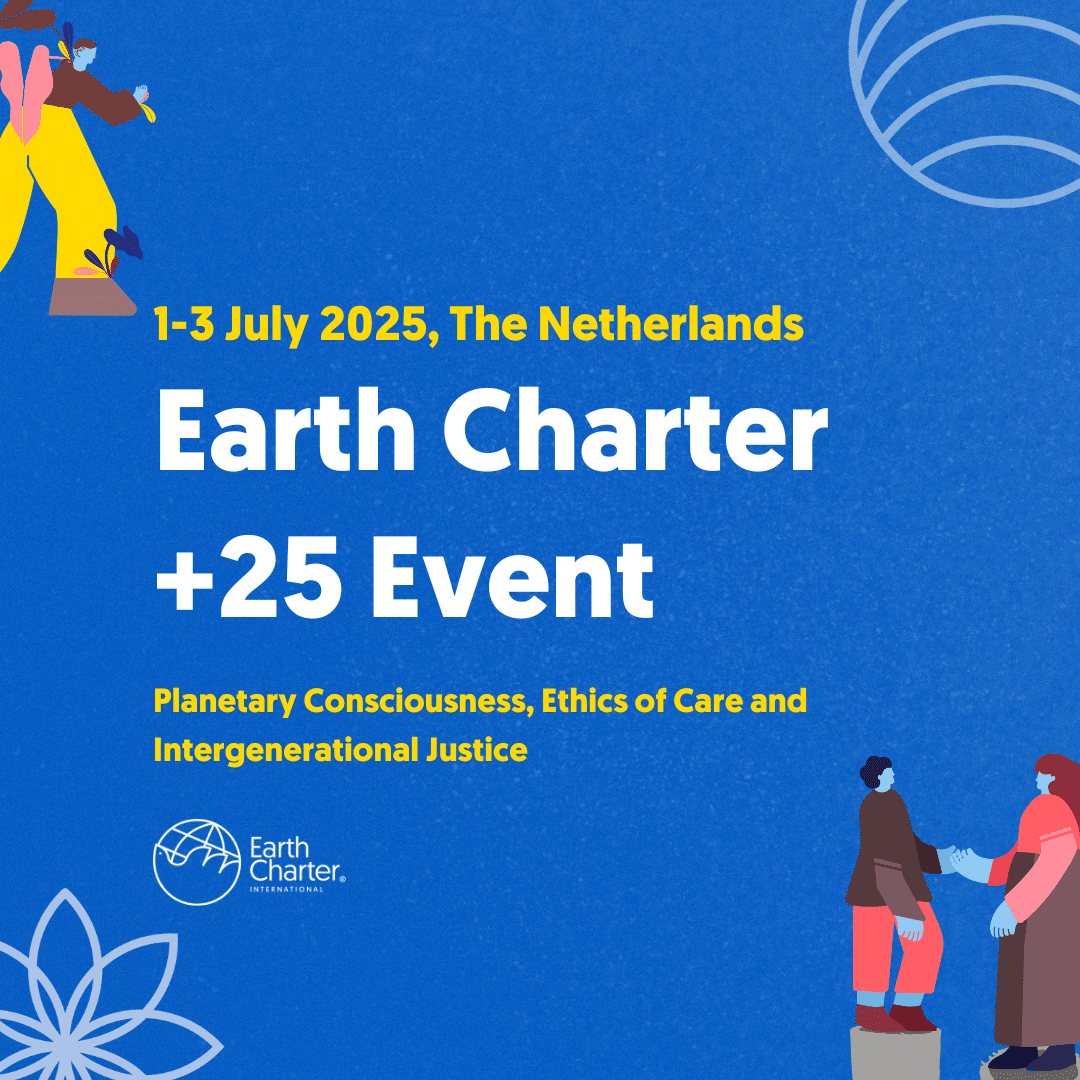
By Mirian Vilela, ECI Executive Director.
(This text is an extract and adaptation of a message offered at the occasion of the “Shift to Green” Webinar to celebrate the 2020 Mapting Photo Contest Award – event held on 19 September)
As I was looking at the selected artwork submitted for this contest, it came to my mind that: an artist, a photographer or a video maker, has the ability and the opportunity to Zoom in and Zoom out. To look at a detail and at the whole. And to see and decide what goes in or out of a picture. All of this to find the best way to communicate an idea or a feeling. If the photographer or the painter spends too much time in a detail or too much time on the whole; he/she may lose something important, so, being able to move well (or flow) between these dimensions (detail and the whole) is key. Therefore, our human capacity to see and focus is crucial.

In that moment of focus, there is actually a lot going on between the artist and his/her environment and between his/her mind and emotions. The interaction between the observer and what is being observed (between the individual and the environment) is fundamental in the process of taking a picture. And also the combination of reasoning and the feeling. Both are essential in the process of making a decision.
I could see through the artwork presented for this contest, that the sensibility or sensitivity to see, feel and discern is essential to the experience of taking a picture or generating any artwork.
These abilities to see (the whole and the detail), to focus, and to be sensitive, in terms of the interaction with our environment, are crucial, not only for the artist in the moment to take a picture or generate a video or artwork, but, for anyone. In fact, these abilities are most needed in our world today. Especially for our leaders.
Imagine if the world was full of leaders that had the ability to see the whole and the details, in a sort of 360 degrees, the ability to have a short term and long-term vision and the ability to feel and to be sensitive to what is going on…
This makes me think that one of our challenges nowadays is to cultivate these abilities. Maybe, our education systems could invest more in cultivating our capacity to see, focus and feel. If this happened, I believe this would help us to be more mindful towards others and with our surrounding.
In any case, as I have found through a research on experiences of using the Earth Charter in education, the use of art and images is an excellent vehicle to examine, clarify and internalize values, and to process and express feelings and thoughts about different themes. It allows a moment of introspection, which is a kind of internal dialogue combined with an internal and external exchange. It generates multitude of ideas and possibilities. Through this, human creativity flourishes. The culmination of this contest project, that we are celebrating today, is an indication of that.
These are some thoughts that came to my mind as I saw the artwork, generated through this photo and video contest.
This year we are commemorating the 20th anniversary since the launch of the Earth Charter and for this, we developed the slogan: Turning Conscience into Action.
With this slogan, we want to demystify the thinking that many have that working on values, or with the idea of an Earth Ethic, is too abstract and theoretical, but rather we want to show that it helps us move into action, on the right direction. We think the Earth Charter movement is doing this.
So, from our perspective, the Earth Charter is helping us to Turn Conscience into Action for a Thriving Earth. Or at least, it has the potential to help us move in that direction.
I think the Earth Charter expands our vision, and consciousness, about how we ought to relate to one another and the large living world. It also expands our frontiers of care and responsibility to include the future generations. And this new vision and consciousness (of a planetary Ethic) should lead us to action: responsible and informed action.
So, I invite you to see the Earth Charter as an instrument that gives us a clearer vision (of an Earth Ethic) and also on how to turn that vision and conscience into action. An action for a thriving Earth, just like a good pair of spectacles give us a 20/20 vision.
When we look at the various slogans we have selected over the years for the Earth Charter Movement, it says a lot about our work and the message of the Earth Charter. For me, this is more than just a communication slogan. Our themes or slogans give an illustration of what the Earth Charter is all about and where this movement is focusing on. For instance, in 2010, at the occasion of the 10th anniversary of the launch of the Earth Charter, our slogan was: “It starts with one!”
This sentence had the intention to invite people to think that taking our societies to a new direction, and the whole effort of social transformation, simply starts with ourselves. Yes, it starts with an idea, with an action, with a collaboration. But, ultimately, it starts with ourselves.
Then in 2015, our communication theme was “One Earth Community, One Common Destiny”. This is a core idea articulated in the Earth Charter Preamble, which means it is much more than just a short sentence for a slogan. It encapsulates a narrative, a worldview that the Earth Charter wants to instill in our minds: we are part of an “Earth Community.”
In other words, the Earth Charter makes a call for us to celebrate our cultural diversity, and the beauty of our common human identity. It also invite us to be mindful that we are not the only living beings on this planet. So, this short sentence, has the intention to help us shift our worldview from an anthropocentric approach to life, to a more eco centric approach. Besides, the idea of our interdependence with the large living world is strongly embedded in this sentence: We are One Earth Community, with One Common Destiny.
In 2016, we chose the slogan “Sowing a Culture of Peace,” because we wanted to highlight that the vision that the Earth Charter articulates is comprehensive in the sense that it sees the quest for Ecological Integrity and Social Justice as part of the pursuit for peace. With this slogan, we wanted to show the Earth Charter linkage with peace and to inspire people to undertake activities and actions that foster a culture of peace. Of course, the fourth pillar of the Earth Charter “Promote a culture of tolerance, nonviolence, and peace” and principle 16f can serve as an inspiration and a guide for action on this.
In 2017, it was time to stress the linkage that caring for Earth and for the wellbeing of other living beings on this planet means to care for ourselves. Therefore, our slogan was “To care for Earth and life, is to care for oneself.”
In 2018, we wanted to communicate that the Earth Charter values are linked, or can be linked, to our day-to-day decisions and lifestyles. With this, we wanted to bridge the concept idea of sustainability to our lives. So, our slogan was “Embrace a Sustainable Lifestyle.” The effort here was to show that our values and decisions, whether aligned or not with sustainability, are embedded in our lifestyles. And, the Earth Charter values and principles could help in this journey of aligning our lifestyles with sustainability. I have seen schools that have embraced some of these slogans and brought it to the way they communicate about the sustainability work they do. For instance, promoting “small acts of peace such as being nice with a classmate.”
I am mentioning these slogans because I think it helps to emphasize the significance of the Earth Charter to current times. For instance, let me give three examples:
First, The whole notion of “We are one human family, we are part of one Earth Community, with one shared destiny” that the Earth Charter raises, is a vision that helps us to counter act the wave of nationalism, discrimination and xenophobia that we see growing in many regions of the world. There is much work that needs to be done on this.
Second, the increase in urban violence and conflicts around the world due to social divide, racism, lack of tolerance, as well as the polarization of political ideologies make the promotion of a culture of tolerance, nonviolence, and peace even more urgent.
And Third, the fact that most people around the world still see the challenges humanity face of securing environment protection, social justice and peace, in a fragmented way shows a crisis of perception of worldviews. I mean, the vision that “on one side,” lies the human concerns and there, “on the other side” lies the environment and Earth concerns (each placed in separate boxes fighting for attention, as if they are not interconnected), shows that there is still a lot of work to be done to make the integrated and systemic vision of life prevail over the fragmented vision.
So, when people ask whether after 20 years, since its launch, the Earth Charter is still relevant or significant to current times, I think: yes, it is. And actually, I dare to say that it is more relevant and actual than ever. It is not because it was written 20 years ago, that it is outdated, on the contrary, many people stress that the Earth Charter emerged ahead of its time. and I agree with it.
What is most important is that the worldview and aspirations that we find in the Earth Charter have not yet being realized. But they are urgent and much work still needs to be done to make these aspirations and vision a reality.
I want to end by expressing my sincere appreciation for the special collaboration we have had with SGI over the years, including the idea of establishing our Earth Charter Center on Education for Sustainable Development. Much of the work our Education Center does is focused on the intersection of education, sustainability and values. Which is something we started discussing in a joint event we organized for the Johannesburg Summit back in 2002.
The question that continues to trigger our work is “how can the values and principles of sustainability be brought to education in a way that it cultivates a sense of Care and Respect for the Community of Life.” And of course, how can the Earth Charter be used as education instrument in a way that is meaningful and transformative;
The United Nations 2030 Agenda, and its 17 Sustainable Development Goals, presents an opportunity for more collaborative work, and under this framework, we continue to look at the role of values and the importance of an ethical foundation and a different kind of education to realize this agenda. I am constantly thinking of the role we can play in helping to make the vision of this new agenda a reality, especially through the SDG 4.7. This should probably involve enhancing our capacity to see better, as well as to focus and feel more.







